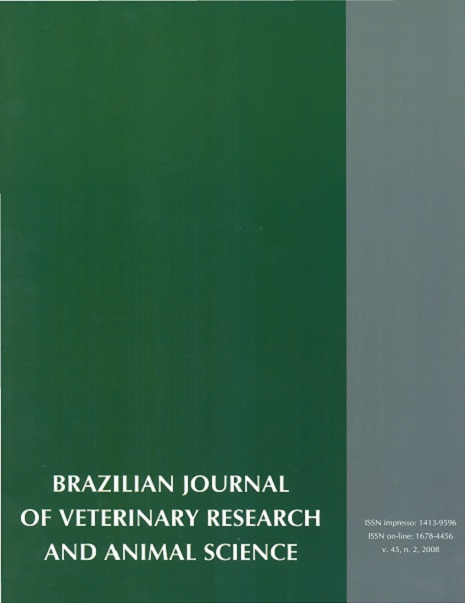Tendon and ligament anatomy of the distal forelimb region in donkey (Equus asinus) used to traction role and relations with the domestic equine anatomy
DOI:
https://doi.org/10.11606/issn.1678-4456.bjvras.2008.26706Keywords:
Asinines, Tendons, Joint ligaments, PhalangesAbstract
The asinine species play an essential role in the northeast region of Brazil in the income of the local families and consequently in the local economy. Due to a large number of locomotor disorders and a lack of professional care, an anatomical study of the distal forelimb region of the asinine was carried out in order to gather information to improve the clinical and surgical practice in this species, and to explain the less susceptibility to locomotor disorders compared to equines. The anatomical study showed that asinine has similar muscular characteristics already described for equines. Tendons and ligaments showed proper characteristics with different origin and attachment already described for equines, emitting tendons projections that improve articular insertion and better stability in its suspensory apparatus allowing a bigger safety during the movement in physic activities.Downloads
Download data is not yet available.
Downloads
Published
2008-04-01
Issue
Section
UNDEFINIED
License
The journal content is authorized under the Creative Commons BY-NC-SA license (summary of the license: https://
How to Cite
1.
Alves FR, Bombonato PP, Mariana ANB, Guerra PC, Machado PP, Cruz-Pinto CE, et al. Tendon and ligament anatomy of the distal forelimb region in donkey (Equus asinus) used to traction role and relations with the domestic equine anatomy. Braz. J. Vet. Res. Anim. Sci. [Internet]. 2008 Apr. 1 [cited 2026 Jan. 1];45(2):101-8. Available from: https://revistas.usp.br/bjvras/article/view/26706





